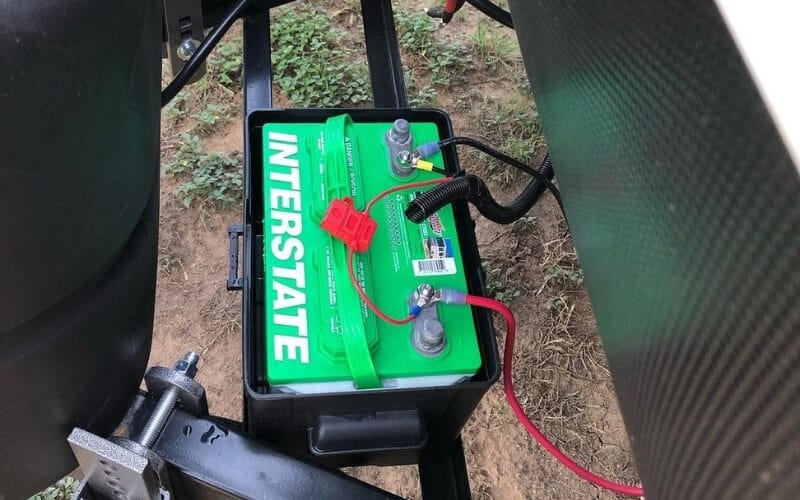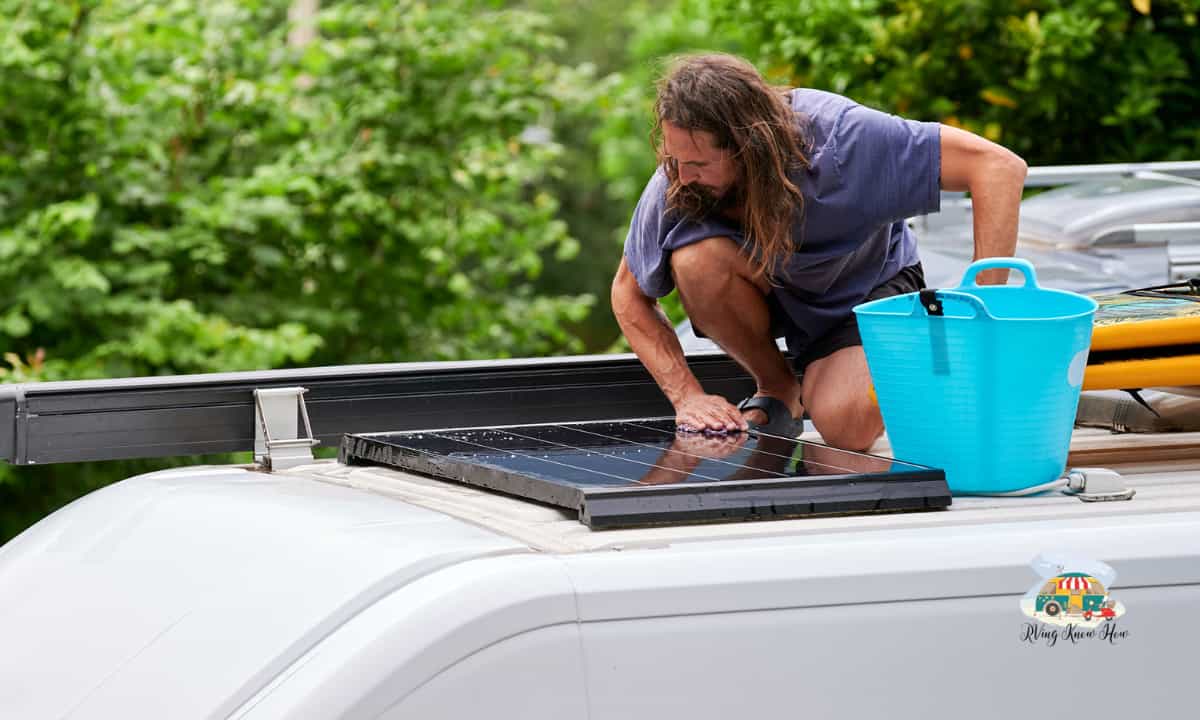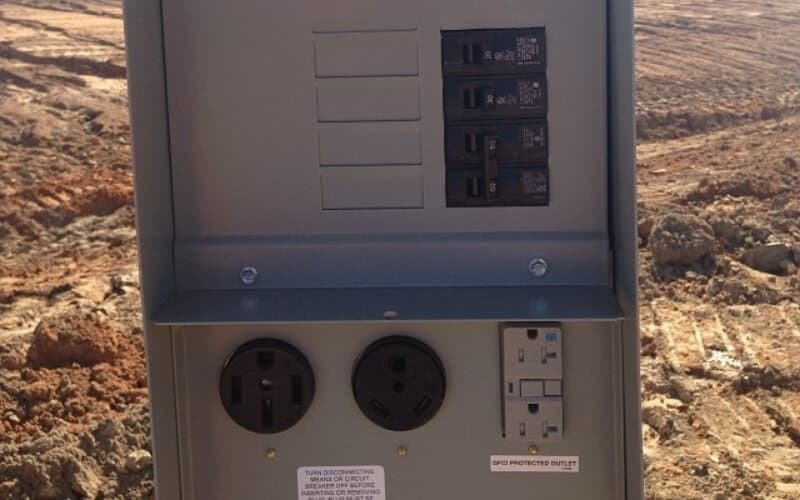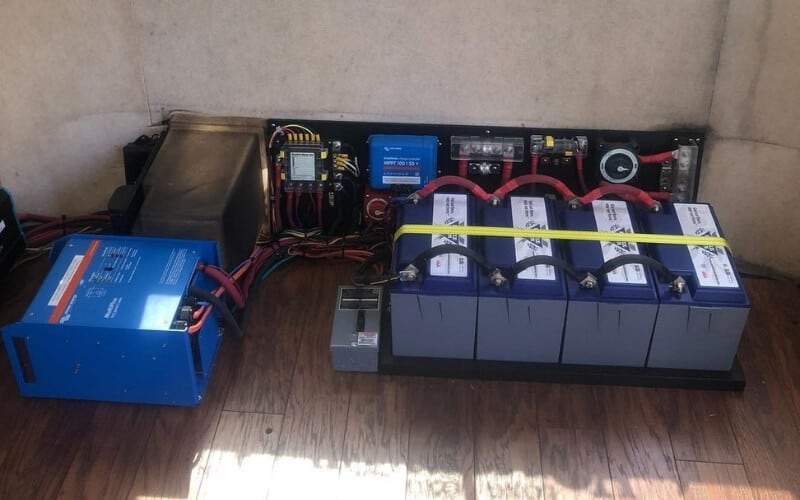RV battery systems are the beating heart of any RV electrical system. They are tasked with running lights, powering small appliances, and more.
Keeping them properly charged can make all the difference between a relaxing RV adventure rife with memories and a trip that you would just rather forget.
If you are a mindful RV adventurer who wants to take care of their rig’s electrical system, you might be wondering if an RV battery will charge when plugged in?
The answer is yes an RV battery will charge when plugged in. Though it will only receive a slow “Trickle Charge which might not fully charge the RV battery overnight. It’s also worth noting that frequent trickle charging by plugging an RV battery in can gradually start to deplete the battery’s electrolyte levels.
The best way to charge your RV battery is to connect it to a 12-Volt RV battery charger. Not only will this charge your RV’s battery faster, but it will have less of an impact on the internal electrolyte levels.
To really make sure that you are giving your RV batteries the kind of care they truly deserve, we will need to take a closer look at some of the finer points of how a battery works, as well as how to maintain them not only during an RV trip but when it’s parked in the driveway at home or stored away for the offseason.
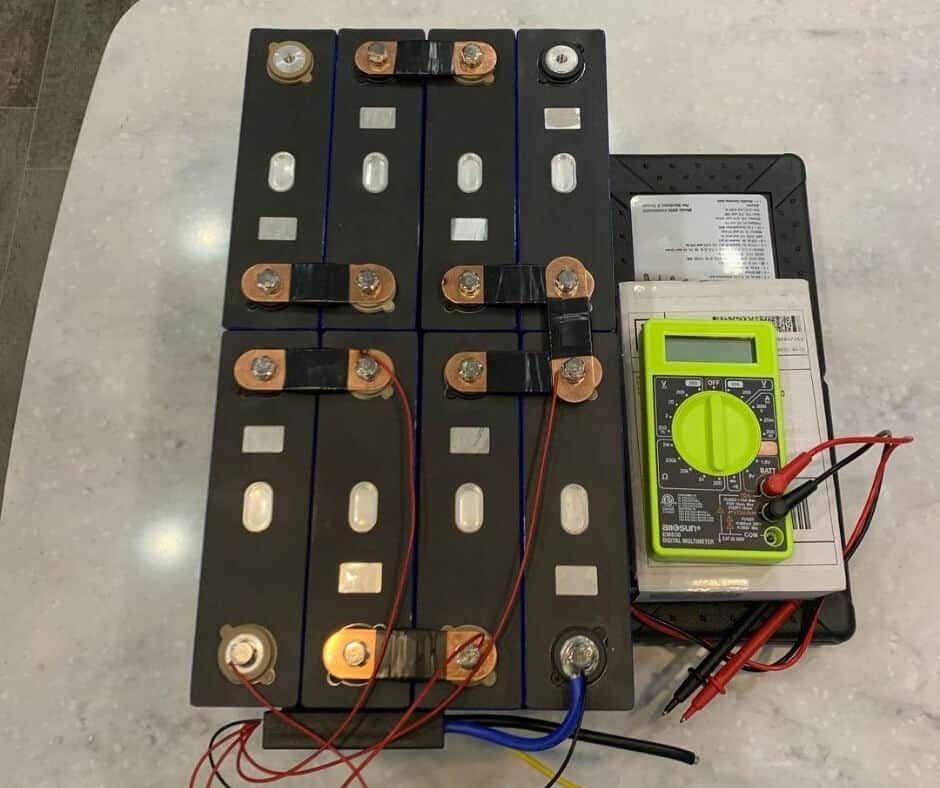
How An RV Battery Works
RV batteries are essentially large 12-volt batteries, that are very similar to the battery under the hood of your truck or car.
Though most RVs don’t connect these batteries to any sort of engine. If you have a motorhome, it has its own 12-Volt battery in the RV’s engine bay.
Some larger RVs have multiple large 12-volt batteries that are interconnected to maximize the power they can deliver.
To effectively maintain and prolong the life of your RV’s 12-Volt batteries, you need to always keep them at 45% of charge or more.
If one or more of your RV batteries drop below 45% of charge, you need to recharge them as soon as possible.
A battery that drops below 20% of its maximum charge can start to suffer damage to the internal components of the battery.
This can make it difficult, if not impossible to recharge the battery to its original 100%. A simple battery tester, voltmeter, or multimeter can tell you the RV battery’s charge level.
Some newer RVs even come with battery indicators built-in. You can easily inspect the charge level/status by checking the voltage it gives off.
When your RV is not in use, you will need to disconnect the ground wire to prevent gradual drainage.
Left connected a trickle “Parasitic” charge will slowly leak out of the batteries dropping them below the vulnerable 45% range.
Things like clocks, TV antenna power booster, LP gas lead detectors, stereos, and appliance circuit boards, all can drain a tiny, yet cumulative charge from your RV’s batteries.
If you have a bad habit of not keeping periodic tabs on your RV’s batteries, you could end up with flat, damaged batteries and a costly replacement bill to boot!
Checking Your RV’s Batteries When Not In Use
When you aren’t using your RV, you need to keep tabs on the batteries. Make sure you are checking the charge levels as well as the electrolyte levels inside the battery cells.
Even when the RV is parked in your driveway during the summer you still need to check them every two to four weeks.
When in storage, you will still need to check them to make sure they are maintaining proper charging and electrolyte levels.
To this point, a lot of RV owners will completely uninstall their batteries when they store the RV away for the winter.
The batteries then spend the cold months safely tucked away indoors, safe from the elements and the dangers of a parasitic load.
Though even kept in this state, you should still check the battery levels at least once a month.
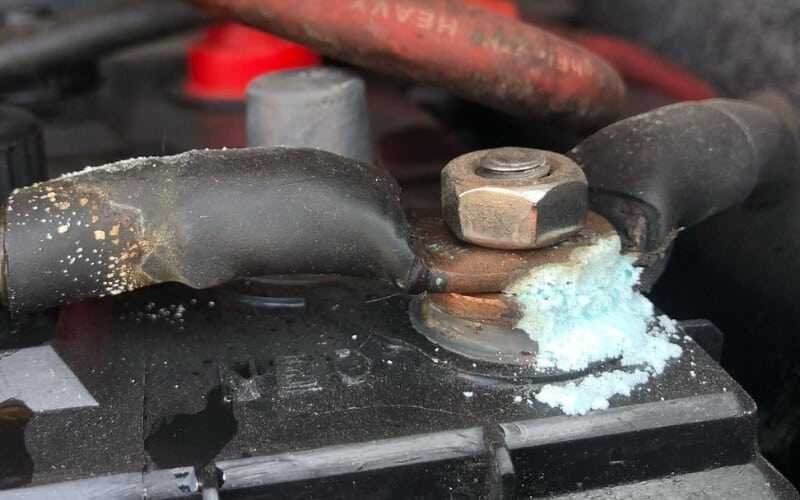
What Is RV Battery Sulfation?
Sulfation is a process that occurs in lead-acid batteries that have been deprived of a full charge for a prolonged period of time.
You can help keep sulfation at bay by keeping your lead acid RV batteries at 80% of charge or more, at all times.
This means that the battery always reads 10.5 Volts on a voltmeter or multimeter set to measure voltage.
Do I Need A Converter When Plugging In An RV Battery?
In most RV’s the RV power converter is mostly used to power things like lights, vent fans, refrigerators, thermostats and similar devices inside the RV.
Though you will only need an RV power converter if you want to directly charge the RV batteries once you have plugged the RV into a campground or RV park’s shore power, or when you are using a generator to directly charge the house batteries.
Can I Plug My RV Battery Into A Standard 3-Prong Outlet?
This isn’t the conventional way to directly charge an RV battery. To do this you would need to set your RV up to be able to connect to the standard 3-prong household plug and you would be limited in what you can run connected to a standard residential electrical outlet.
Instead, the better option is to plug your RV into a three stage battery charger and let the charger properly charge the RV house battery before using it.
Can I Leave RV Batteries On A 12-Volt Battery Charger?
A traditional 12-volt battery charge continues to deliver a steady stream of electricity to the battery when connected.
Once it reaches 100% of maximum charge or a reading of 12-Volts or more on a voltmeter, then you need to disconnect the charger as soon as possible.
This will prevent the excess heat build-up that can potentially damage the internal workings of a lead-acid battery, or compromise the charge capacity of a 12-Volt gel battery.
What Is A Three-Stage Battery Charger?
Sometimes referred to as “Smart Chargers” are a somewhat new and increasingly popular way to charge 12-Volt batteries.
When first connected they act just like a standard battery charger. When first connected it bulk charges the battery up to around 90%.
Then trickle charges the RV battery until it’s nearly fully charged. At that point, the three-stage charger will only deliver more charge if it detects the need for it.
Though this is more of a smart way to charge your RV batteries for times when you might be away.
Say you are at camp and you want to take a full-day tour of one of the local attractions. You can then connect your RV’s battery to a smart charger and let it charge while you are away.
Though smart chargers are not a long-term battery maintenance option when storing your RV for the winter or letting it sit for a month in your driveway.
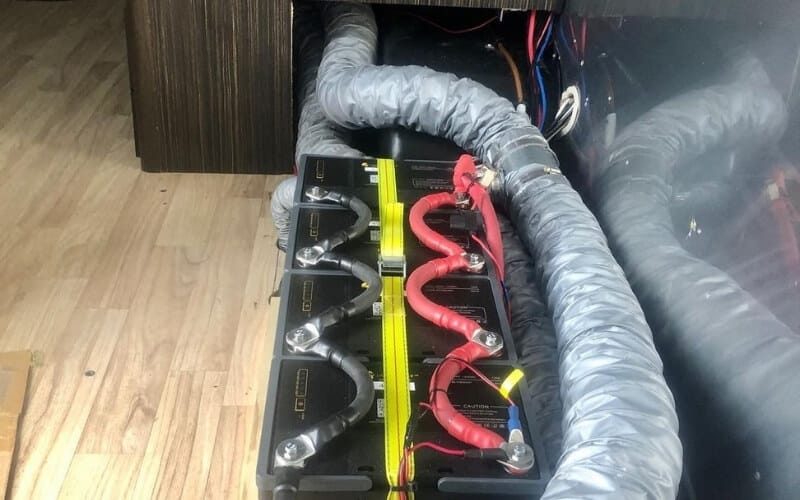
What Is A House Battery?
Many RV batteries are called “House Batteries” as they only power the interior of the RV and have to direct relationship to the engine of the vehicle.
A motorhome has it’s own 12-Volt battery to start it and run the vehicle’s headlights, taillights, and indicators.
Most RV appliances and electrical systems operate efficiently and correctly on the DC voltages, usually between 10.5-15V.
House batteries are designed to deliver sustained power over a long time period. They continue to operate properly until they are discharged to at least 80%.
At that point, performance may decrease as the charge held inside the battery decreases. With proper maintenance, a deep cycle 12-volt house battery can last for up to a decade.
Though this does require 10 years of diligent care, proper charging, consistent disconnecting when not in use, and charging as often as possible with a three-stage battery charger.
What Is A Deep Cycle RV Battery?
The term “Deep Cycle” refers to the levels of discharge a 12-Volt battery is capable of.
This essentially means that Deep cycle batteries can work longer depending on usage before needing to be recharged again.
This makes them the ideal choice for an RV house battery that needs to support the interior electrical needs of the RV’s living space.
While you see them most often in RVs, deep cycle batteries can also be found in boats, marine vehicles, golf carts, and as part of off-grid renewable energy systems.
Very large, interconnected deep cycle batteries can also be found in forklifts.
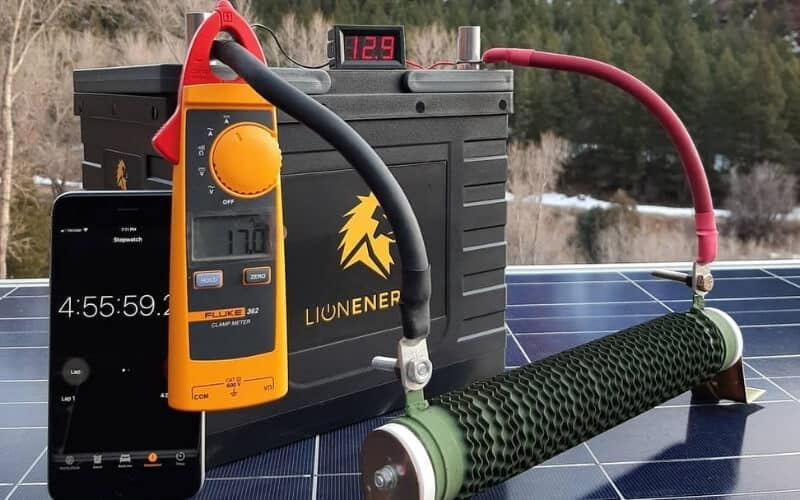
Can Solar Panels Help Maintain An RV House Battery’s Charge?
Solar technology continues to advance at a rapid pace. To the point that solar panels sold at the retail level are far more effective at producing electricity via advanced photovoltaic cells, than just a few years ago.
Of course, this has made them increasingly popular for RV travelers who like to boondock off the grid, without having to connect to a campground’s shore power.
Though it’s worth noting that solar charging can provide between 3 to 5 amps and only work well if the photovoltaic panels are directly facing the sun.
So, unless you have set up camp in a wide-open area with blue bird clear skies, chances are you won’t get enough amps to fully replace the power you are using inside the RV.
Though solar panels and even small consumer-grade wind generators can help keep your RV batteries above 80% for longer.
What Is The Best Way To Recharge RV Batteries When Boondocking?
If you like to camp off the grid for several days at a time, then solar panels and consumer wind generators likely aren’t going to be able to keep your RV’s house battery at 80% of charge or higher.
In a situation like this, the best option is to invest in a portable generator that has the wattage to power a 40-Amp multi-stage charger.
You can then run it for a few hours each day to recharge your RV’s house batteries to 100%. of hours daily.

